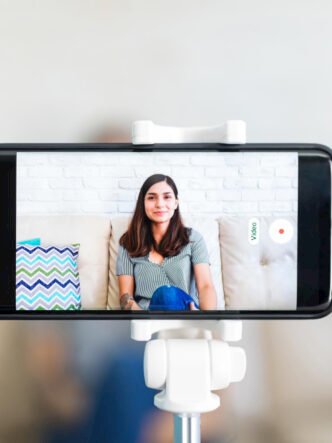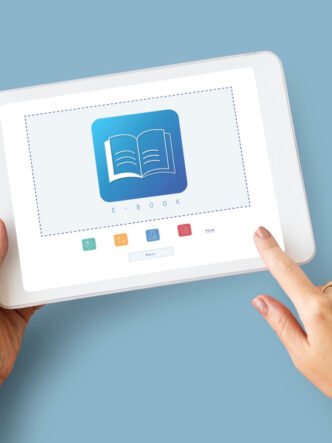As an online educator, creating your first e-learning course or a corporate trainer developing online learning materials, accessible e-learning videos are essential. Accessibility in e-learning means designing content with the needs of every learner in mind. This includes learners with physical, auditory, visual, or cognitive disabilities. Accessibility is related to disabilities but accessible content benefits all learners. Accessible e-learning videos create a more inclusive learning experience.
The Americans with Disabilities Act (ADA) protects individuals with disabilities from discrimination. For ADA-compliant videos, employers need to make reasonable accommodations for employees with disabilities.
E-learning video creators also need to take Web Content Accessibility Guidelines (WCAG 2.0) into account. Video accessibility guidelines include ensuring that users are able to perceive content and must be able to operate all controls, buttons, and other interactive elements. Information and operation of the digital interfaces must be understandable. Content must be robust enough to work on various browsers, devices, and assistive technologies.
The Universal Design for Learning (UDL) framework addresses diverse learning needs through using varying strategies. Learners should be able to adjust settings like speed, volume, font size, and color contrast. They should be able to choose the type of format and feedback that suits them best.
Video content offers one of the best ways to encourage learner engagement and retention. Making videos interactive enhances the e-learning experience. Learners can answer quiz questions, hit buttons, choose options, or access further information. For all learners to get the full benefits of video training, they need access to accessible e-learning videos. They reduce barriers to learning and make the experience more inclusive.

Core elements of accessible e-learning videos
Some of the core elements of accessible e-learning videos include captions, transcripts, audio descriptions, and clear visuals with high contrast. These elements are essential to make e-learning videos accessible.
Accurate captions and transcripts
Video captions and transcripts provide spoken words for learners who are hard of hearing or who prefer to read. Captions are text overlays that display the audio content of videos. Transcripts are text versions of videos that learners can download or view separately. Both can provide a better experience for learners with different learning styles.
Audio descriptions for visual elements
Audio descriptions provide spoken descriptions of visual elements for learners with visual impairments. These descriptions should be in simple and clear language.
High-contrast visuals and readable fonts
Images, text, and other visual elements in the video must contrast enough with the background so learners with visual impairments can see them.
Video messaging enhances e-learning video accessibility by giving learners a way to receive personalized support from instructors and peers. Including closed captions and transcripts is easy. Offering personalized feedback and answering questions or clarifying instructions improves the learning experience.
Technical best practices
To follow WCAG for operability, users should be able to control videos and interactive elements by keyboard, mouse, touch, or voice controls. Users should have clear instructions, labels, and the ability to provide feedback on accessibility.
Keyboard-accessible video players
Keyboard-accessible video players allow learners to interact with videos relying only on a keyboard. These players typically include features such as keyboard shortcuts. With these shortcuts, learners can control functions such as play, pause, and volume. Visible focus indicators help to guide users.
A keyboard-accessible video player will typically integrate well with assistive technologies like screen readers. It will also support captions and audio descriptions.
Mobile accessibility considerations
One of the key mobile e-learning accessibility considerations is to design for small screen sizes. Content must be readable across varying devices and screen sizes. Buttons and other interactive elements should be clearly visible on smaller screen sizes and spaced to accommodate learners with limited dexterity. Accessible mobile apps and websites help to promote inclusive online learning.
Language localization for wider access
Language localization in e-learning videos is adapting video content to suit a specific target audience. It’s a process that involves translating a video into many languages. It goes beyond mere translation as you may need to adapt audio and visuals. Images, references, etc., and other elements in videos should align with the cultural norms of local audiences.
Common mistakes to avoid
Engaging video tutorials help to streamline employee skill development. Ensuring they are accessible to all employees is essential. If you want to ensure accessibility, you need to avoid the following mistakes.
- If you don’t provide alt text for an image, this is a barrier for visually impaired users. The alt text explains what is in the image.
- Auto-generating captions and not editing them is a mistake. They can contain errors and editing them will help to eliminate them.
- Partially blind or color-blind learners will find it difficult to see content with poor color contrast. When placing text on a background image, it must stand out as clearly as possible.
- It’s a mistake to rely solely on color to convey any important information. Using similar hues in charts or graphs can make it hard for visually impaired learners to interpret the data. Charts and graphs should have text labels.
- Some drag-and-drop activities rely on a learner using a mouse, which will exclude anyone using keyboard navigation. You may be able to rework your e-learning content to offer an alternative interaction that’s more accessible.
- If you fail to test factors like integration with assistive technologies, you can overlook barriers to accessibility. Before deploying a video, it’s important to test it with screen readers, screen magnifiers, voice recognition software, and other assistive technologies.

Tools and platforms that support accessibility
Accessibility tools
- You need tools to add captions, transcripts, audio descriptions, and alt text to videos. Editing and customizing tools can help you to enhance them.
- Customizable user interfaces allow learners to change elements to suit their preferences.
- Accessibility checker tools run automated accessibility tests and check for issues such as color contrast and keyboard accessibility.
Choosing the right hosting and player option
The video hosting platform you choose should support accessibility with the options it offers.
Cincopa offers fully accessible video hosting with customizable video players, caption support, and mobile optimization. It helps educators meet ADA and WCAG compliance with ease.
Cincopa ensures you can deliver quality videos that adapt to different devices, screen sizes, and internet speeds. It uses adaptive bitrate streaming to adjust video quality according to the bandwidth of the viewer.
On the platform, you can meet the different learning styles of learners with both live streaming and video-on-demand. You can also provide multiple learning formats, such as audio, text and video, to accommodate diverse learning needs.
The platform is compatible with most Learning Management Systems (LMSs). When your LMS is accessible to all employees, they can get the training they need to be more efficient in their roles.
By creating channels for learners to report accessibility issues, you can keep improving the accessibility of your video content. Just make sure you create accessible feedback forms using proper labels and keyboard navigation.
On Cincopa, you have access to advanced analytics so you can get in-depth insights on how your e-learning videos perform and how learners interact with them. By observing performance and viewer behavior, you can make adjustments that keep making your e-learning videos more accessible.
Conclusion
According to the Center for Disease Control (CDC), about 20% of U.S. citizens have at least one disability. This is why e-learning video accessibility should never be an afterthought. It needs to be an integral part of your e-learning strategy right from the start. By aligning your video content with accessibility regulations and standards, you will ensure your e-learning is accessible to all learners. On the Cincopa home page, you can sign up for a free trial and explore how it can help you create accessible e-learning videos.









